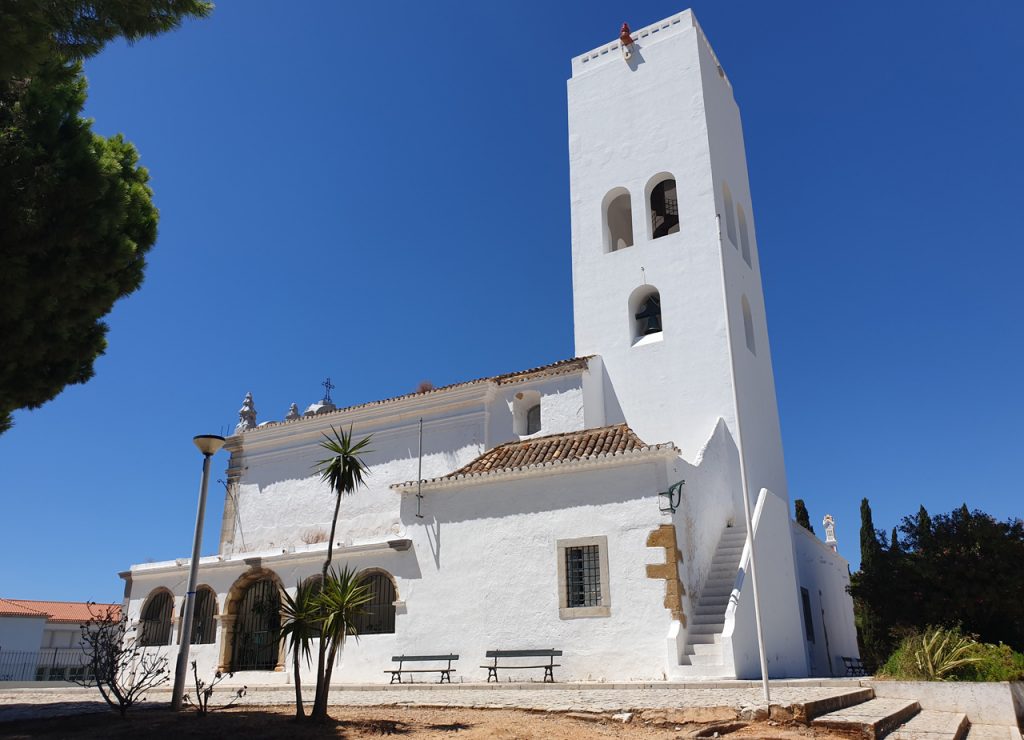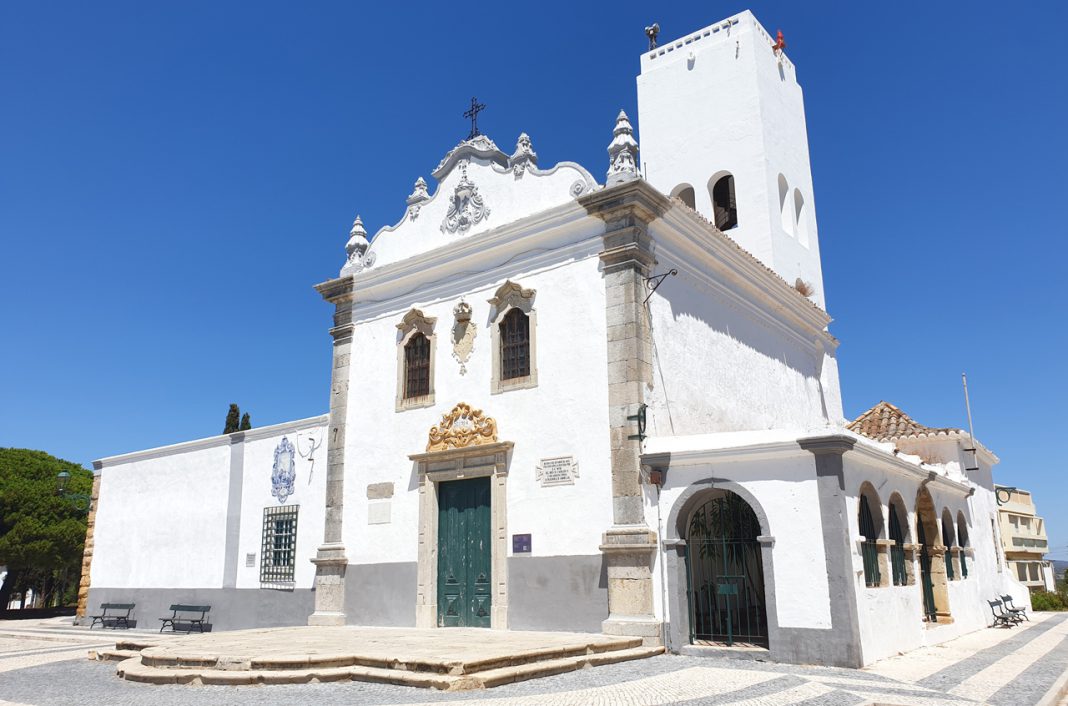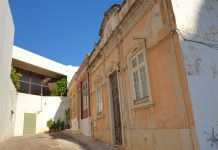This picturesque hermitage is located on the highest spot of Faro. Nobody knows when it was built, but it probably dates from the 15th century.
By then there was a surveillance defensive tower from the 14th century on the top of the hill. Raids from north African pirates were common and a warning system was necessary. This tower was incorporated in the new temple and can be seen on the location. The views from up there are outstanding but unfortunately it’s not usually accessible to the visitors. This tower was expanded in the 20th century and part of it was transformed in a water deposit.
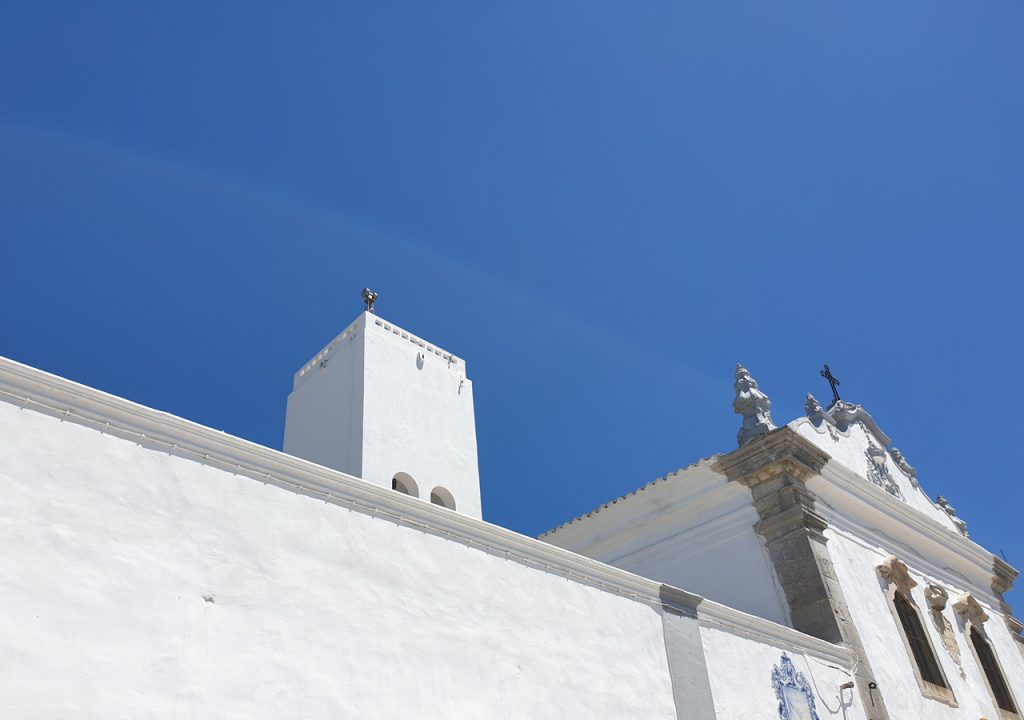
The temple is named after Santo António (Saint Anthony), known as Santo António de Pádua and Santo António de Lisboa, as he was born in the Portuguese capital. “Alto” means (amongst other things), a high position, typically a top of a hill.
In the 16th century there were some renovation works and the ground level of the old surveillance tower was transformed to host the main chapel. But most of the actual hermitage is the result of a deep intervention in the 18th century. The nave was expanded and a sacristy and a new front facade was built. These works were led by the architect Diogo Tavares and there is a date over the door marking the year: 1754.
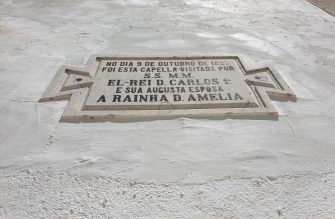
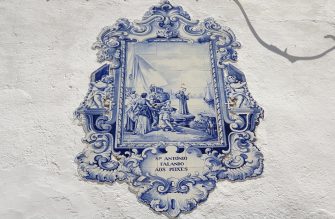
Notice the plate on the front facade. It says the king D. Carlos and the queen D. Amélia visited the location on the 9th October 1897. Another interesting element is the small set of blue tiles depicting a scene of the The Sermon of Saint Anthony to the Fish. The allegory was written by father António Vieira, who lived in the 17th century. More details in this Wikipedia article.
Another interesting detail is the stone erosion noticeable in the blocks of yellow limestone used in the corners of the hermitage.
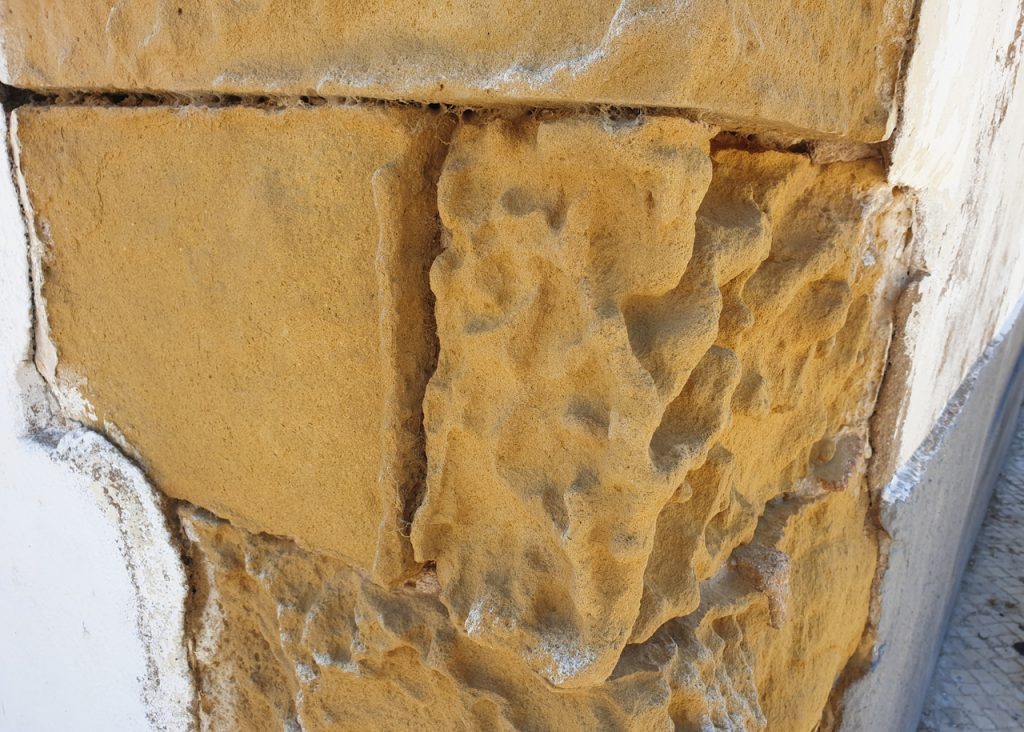
Inside there are some elements with features from Manuelino, a Portuguese version of Gothic which include decorative nautical details. The altar piece was made by Mestre Manuel Martins, Tomé da Costa and Francisco Xavier Guedelha. In this specific element, Baroque is the dominant style.
Unfortunately it’s not usual to find hermitage open to the public. But the location is generally quiet and the atmosphere is relaxing. During the commemorations of the three saints (Saint Anthony, Saint Peter and Saint John) which take place in June, there is usually an arraial here. Arraial is a popular traditional party, with music and the grilling of sardines, eaten with boiled potatoes, bread and plenty of salad.
There is a museum there, dedicated to the life and work of Saint Anthony. Its collection is mostly composed by paints and engravings.
Currently the hermitage is property of the Municipality and it was recently (2019) maintained with funds from the City. It got a well needed new coat of paint.
